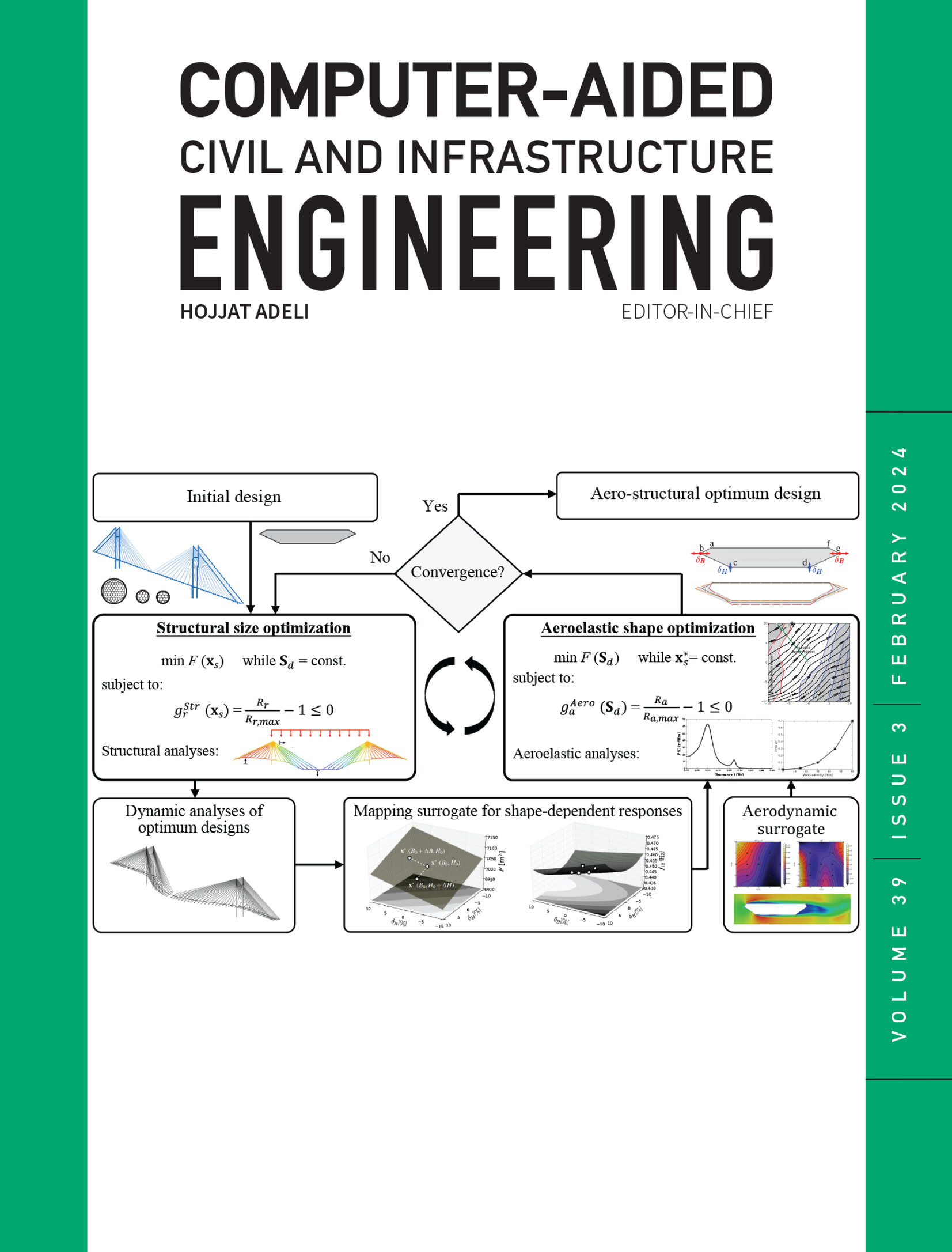A methodology for incident detection in sectorized water distribution networks based on pressure and flow data
IF 8.5
1区 工程技术
Q1 COMPUTER SCIENCE, INTERDISCIPLINARY APPLICATIONS
引用次数: 0
Abstract
This study presents an intelligent system for predicting incident reports (IRs) in sectorized water distribution networks, such as drains in sidewalks, lack of pressure, lack of water, leaks, or others, based on pressure and flow data. Currently, incident detection in the industry is highly inefficient, as it is always performed reactively—only after an incident has already occurred and its negative consequences are visible to users. Since these data are recorded at 5- to 15-min intervals, a methodology is proposed to integrate them with daily IRs. After processing the data, a supervised classification learning system is developed with a binary output variable indicating the likelihood of an incident at a specific time step. The methodology is validated using 2 years of data from a real network divided into eight sectors. The system predicts 51.3% of IRs, with 78.9% accuracy, highlighting the strong influence of daily mean and maximum flows on incidents.基于压力和流量数据的分区配水网络事故检测方法
本研究提出了一种智能系统,用于根据压力和流量数据预测分区配水网络中的事件报告(IRs),如人行道排水、缺乏压力、缺水、泄漏或其他。目前,行业中的事件检测效率非常低,因为它总是在事件已经发生并且其负面后果对用户可见之后才被动地执行。由于这些数据每隔5至15分钟记录一次,因此提出了一种方法,将它们与每日IRs结合起来。在对数据进行处理后,开发了一个监督分类学习系统,该系统使用二进制输出变量表示在特定时间步长发生事件的可能性。该方法使用2年的真实网络数据进行了验证,该网络分为8个扇区。该系统预测51.3%的ir,准确率为78.9%,突出了日平均流量和最大流量对事件的强大影响。
本文章由计算机程序翻译,如有差异,请以英文原文为准。
求助全文
约1分钟内获得全文
求助全文
来源期刊
CiteScore
17.60
自引率
19.80%
发文量
146
审稿时长
1 months
期刊介绍:
Computer-Aided Civil and Infrastructure Engineering stands as a scholarly, peer-reviewed archival journal, serving as a vital link between advancements in computer technology and civil and infrastructure engineering. The journal serves as a distinctive platform for the publication of original articles, spotlighting novel computational techniques and inventive applications of computers. Specifically, it concentrates on recent progress in computer and information technologies, fostering the development and application of emerging computing paradigms.
Encompassing a broad scope, the journal addresses bridge, construction, environmental, highway, geotechnical, structural, transportation, and water resources engineering. It extends its reach to the management of infrastructure systems, covering domains such as highways, bridges, pavements, airports, and utilities. The journal delves into areas like artificial intelligence, cognitive modeling, concurrent engineering, database management, distributed computing, evolutionary computing, fuzzy logic, genetic algorithms, geometric modeling, internet-based technologies, knowledge discovery and engineering, machine learning, mobile computing, multimedia technologies, networking, neural network computing, optimization and search, parallel processing, robotics, smart structures, software engineering, virtual reality, and visualization techniques.

 求助内容:
求助内容: 应助结果提醒方式:
应助结果提醒方式:


